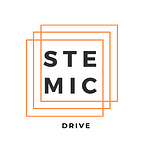Dynamic pricing modeling for UBI insurance
Pooled pricing fails
Wherever pooled prices are being used, consumption is higher than with individual pricing. As an example in apartment blocks, the pooled power meters are causing 30 to 40% higher energy consumption than with individual meters. When nobody is accountable for the result, and individual users can not influence their personal outcome, no one is taking collective responsibility. That is exactly how car insurance work today, nobody has the incentive to reduce claims costs.
Dynamic pricing essentials
As Wikipedia defines — Dynamic pricing, also referred to as surge pricing, demand pricing, or time-based pricing is a pricing strategy in which businesses set flexible prices for products or services based on current market demands.
Auto insurance pricing is the calculation of a fair premium, given the policyholder characteristics and other past claim information. Pricing actuaries or data scientists commonly use Generalized Linear Modeling Techniques to build two models: claim frequency and claim severity, then the resulting scores are multiplied together to get the expected loss for each policyholder. Generalized Additive Models (GAMs) in auto pricing were first introduced by Hastie and Tibshirani in 1986. The reason to use GAMs is they treat continuous covariates in a more flexible way and offer the advantage of interpretability when compared with the traditional GLMs in actuarial science. The interpretability of a pricing model is crucial to explaining the premium structure to clients and state regulators.
Dynamic pricing in data and IOT age
With usage-based insurance being considered by an increasing number of insurance companies, dynamic pricing isn’t far behind.
Today’s telematics technology can provide insurers with granular data based on real driving habits and behavior, revolutionizing the ability to rate risk. A pay-how-you-drive model (PHYD) provides insurers with detailed data on individual driving activity, as gathered by telematics devices in the vehicle. The detailed usage data enables insurers to implement usage-based insurance (UBI), creating a much more precise risk profile and more optimized policy pricing for each customer.
Insurers must effectively adapt to new technological, market, and consumer complexities with better, more dynamic pricing if they want to maintain competitive advantage in the insurance industry. — BCG
For example, if you have a telematics device in your car that indicates you’re texting on social media, flipping through songs on your smartphone, driving 100,000 miles a year, and consistently exceeding the speed limit, your dynamically priced premium is likely to be higher than the price of your car. On the other hand, if you consistently drive below the speed limit, keep both hands on the wheel, wear your seatbelt, drive 1,000 miles a year, and have never had an accident, you can likely expect a preferred rate on your auto policy.
Machine learning and technology is already capable to implement dynamic pricing
The machine learning algorithms allow us to identify and forecast who will cause claims to what cost — which is the prerequisite for building the required transparent and dynamic pricing models that are needed.
A model that correlates driver scores to claims frequency, people pay for themselves and can influence the cost of the premium. Technology gives people the opportunity and transparency to take a stand. Instead of a fixed annual price that is the same no matter how you behave on the road, the technology allows them to see the cost for every trip driven — which evidently inspires people to a substantial change in driver behavior, leading to significantly lower claims frequency.
The new value for insurance carriers and their customers
The UBI technology maps out drivers who should be rewarded and those driving in a way that is dangerous for road safety. By pointing out the insurance company’s highest risk drivers, the technology can identify the company’s biggest claims costs and where the unnecessary costs lie — and give them a tool to improve.
This means a win-win situation: for the drivers who get lower insurance costs, for insurance companies who reduce the number of high-risk drivers and reduce unnecessary damage costs and for the environment, as the companies will have a 17 percent reduction in carbon dioxide emissions.
About Stemic Drive
Stemic Drive is a next-generation usage-based insurance (UBI) technology platform. We manage the full life cycle of data. From acquisition to transformation to analytics to insights for predictive insurance dynamic pricing. We are providing a risk score for the driver and fleet that can convert to a dynamic pricing strategy for the insurance carriers. We work with insurance companies that want to leap in UBI for their clients. We provide all the toolset and platform to run UBI business smoothly. Visit www.stemicdrive.com
